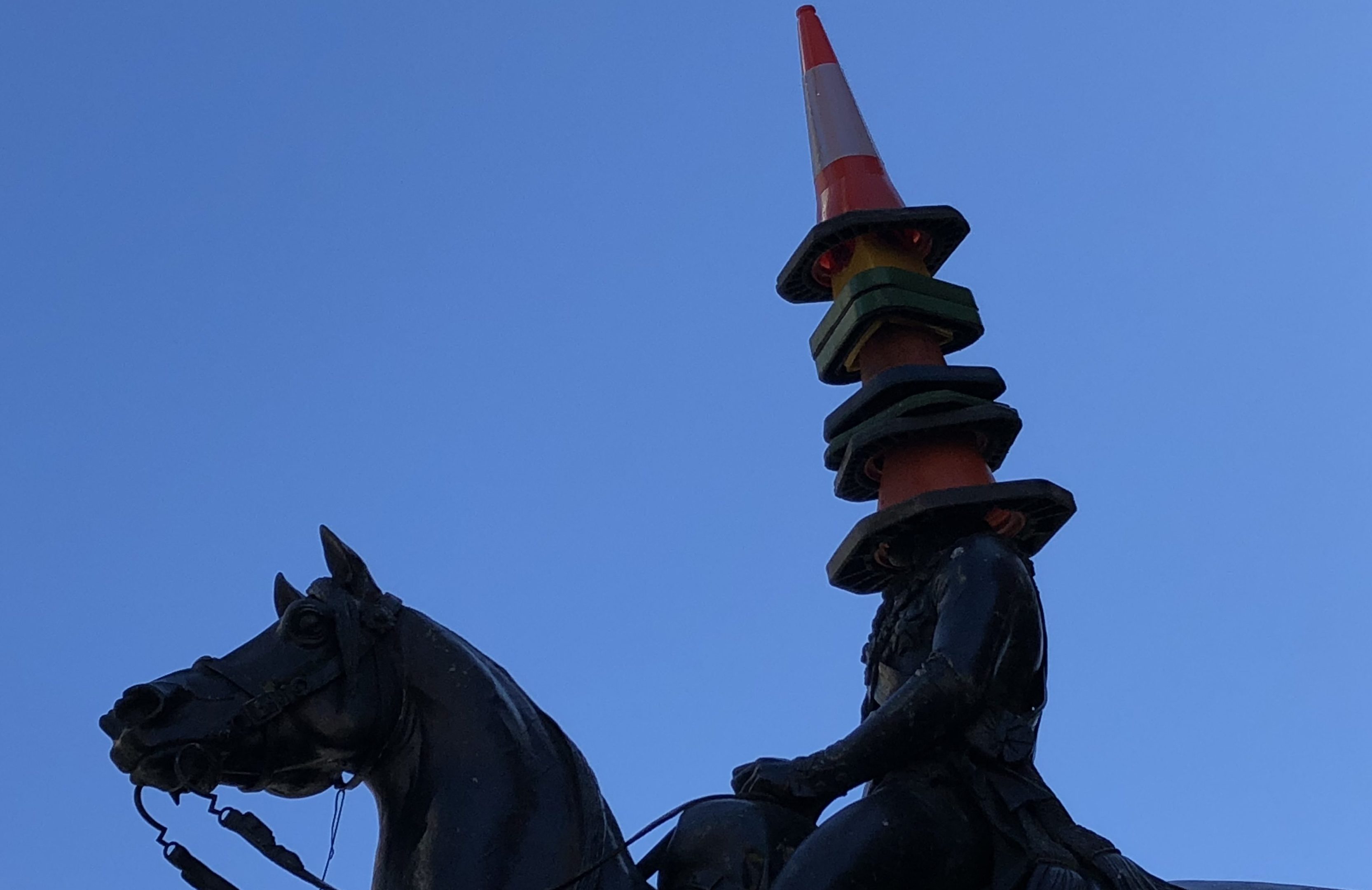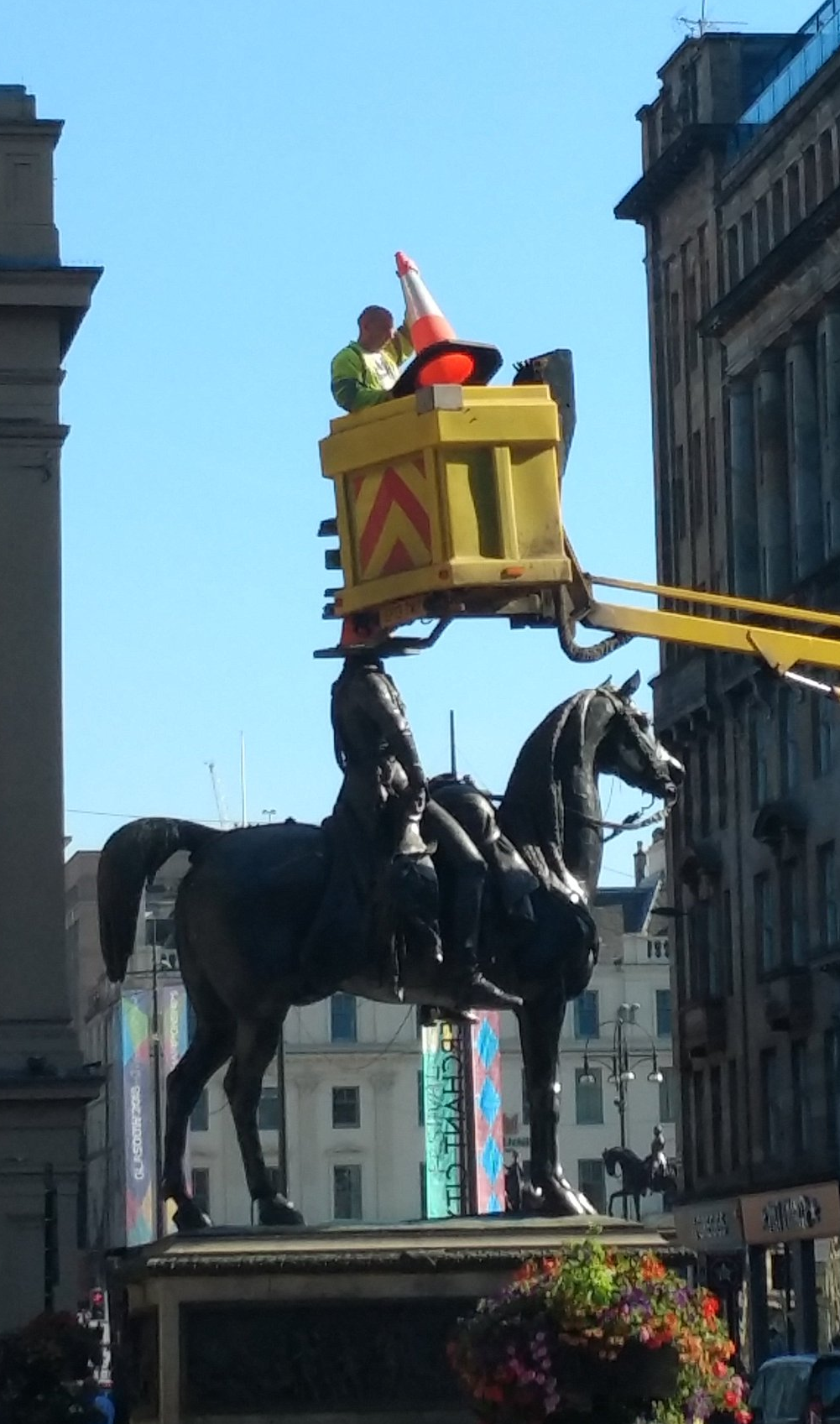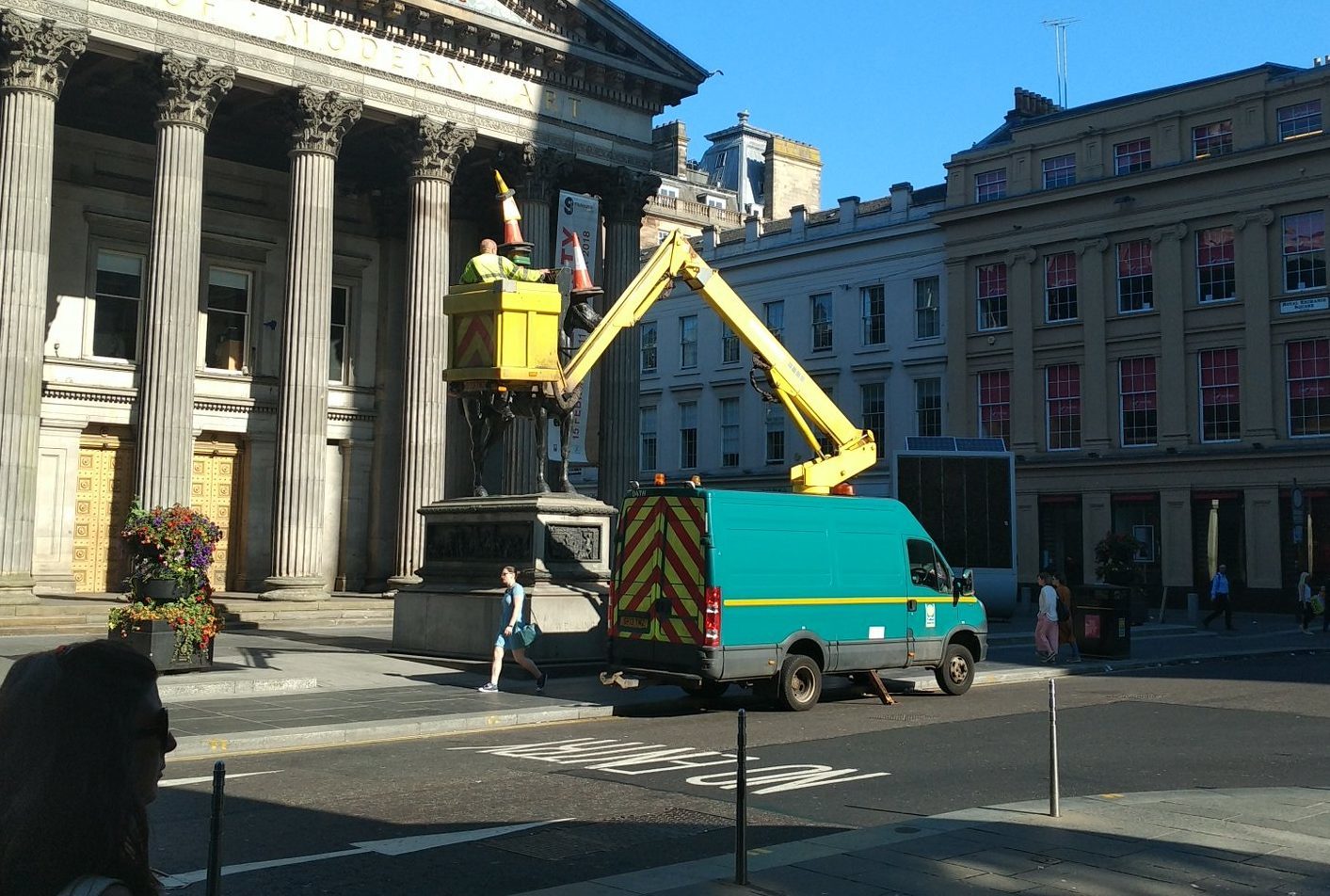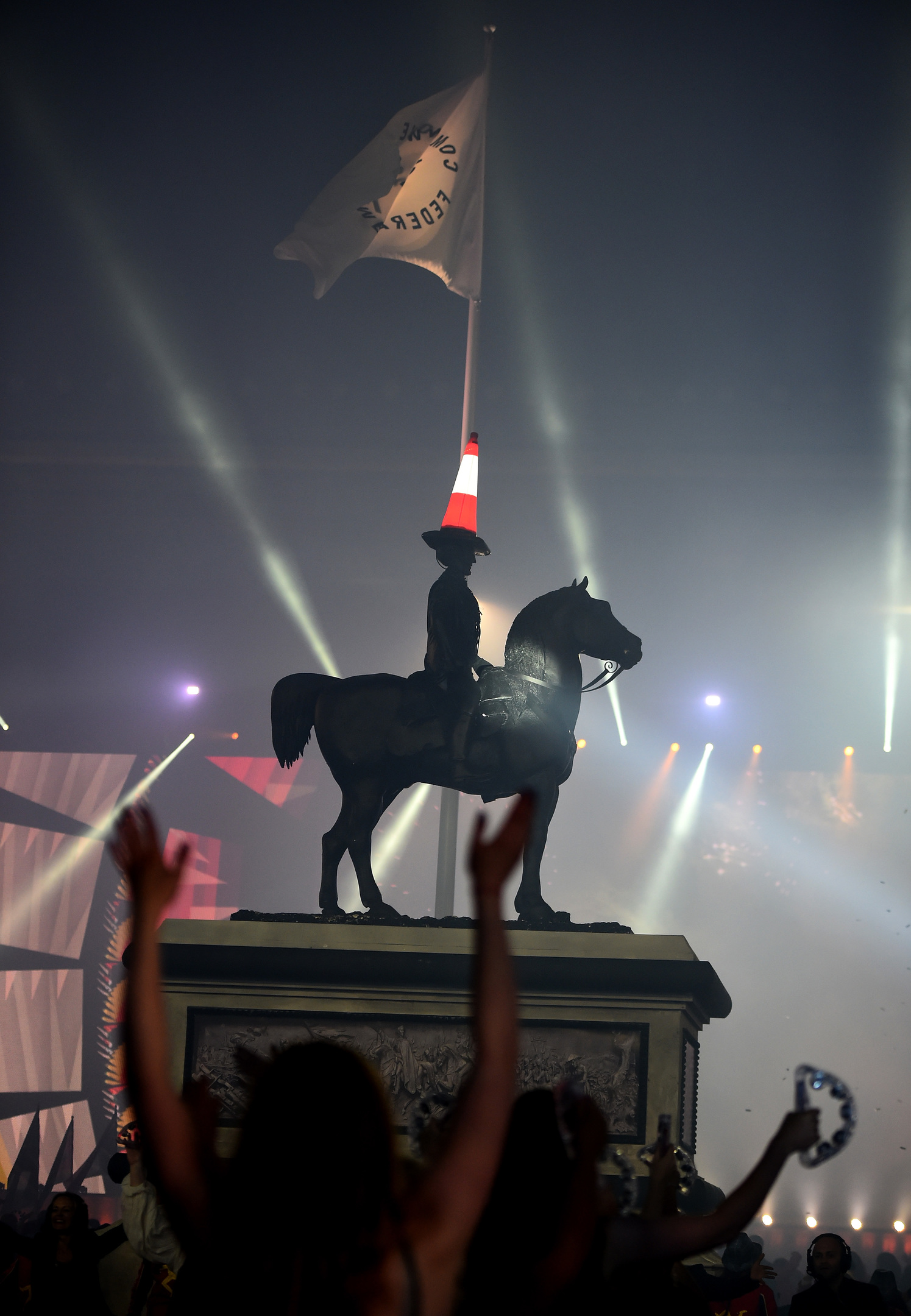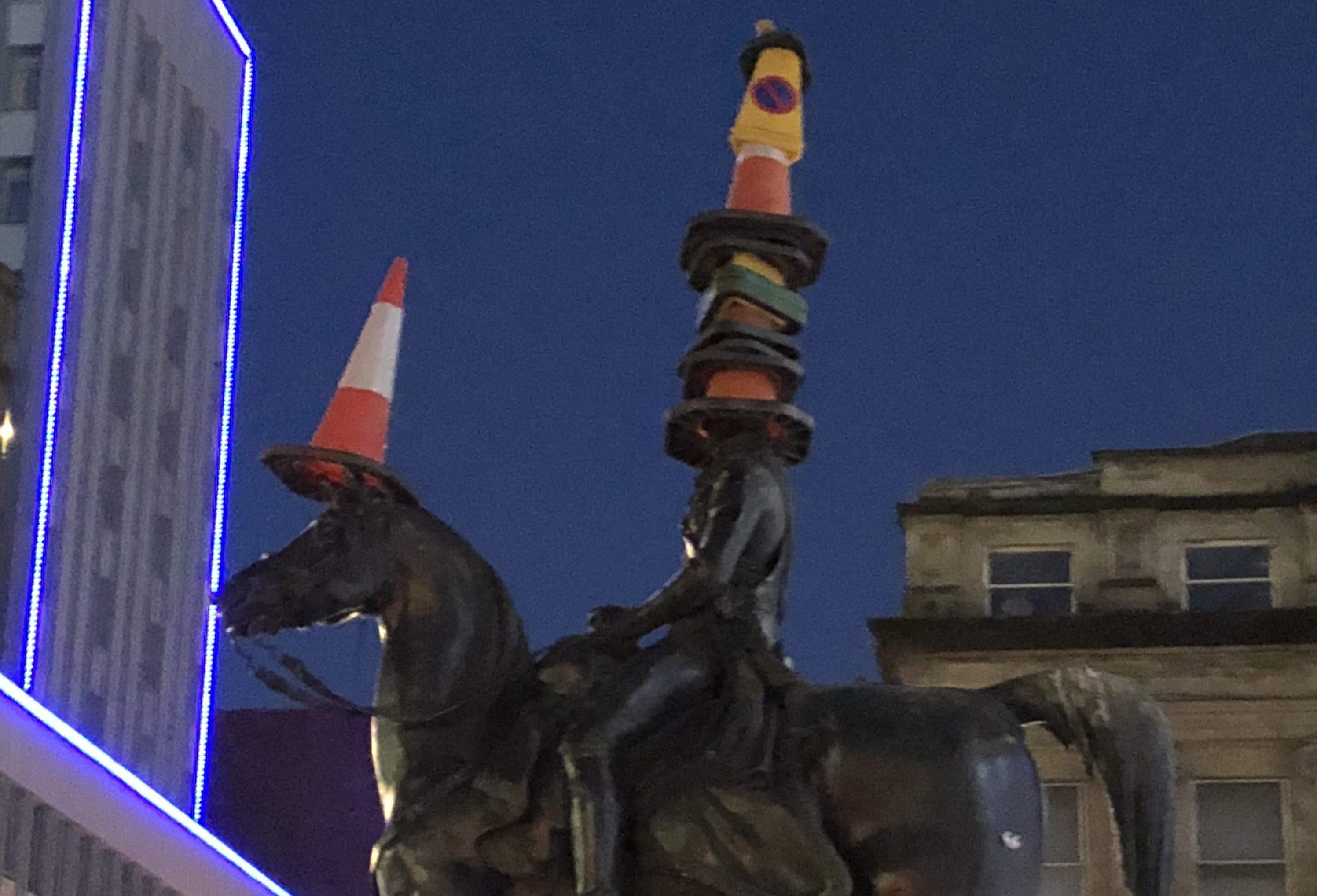
YOU may have enjoyed a few cones during this glorious spell of weather.
But one Glasgow statue has had a few too many throughout the heatwave.
Council bosses have finally intervened after an increasing number of traffic cones were balanced on top of the city’s Duke of Wellington statue.
It’s famously adorned by a cone at almost all times, so much so it has become a city icon.
With the number reaching at least ten, however, it was time to call it a day.
Workers arrived at the site of the monument, outside the Gallery of Modern Art, to take down all but one of the cones earlier today.
A council spokesman said: “We absolutely understand that the cone on top of the duke’s head is a much loved Glasgow icon.
“But the precarious nature of the cones on the statue was creating a risk to passers-by and so the cones were removed.
“Anyone climbing on the statue is putting themselves and others at risk of harm.”
A Glasgow i-cone
The tradition of giving the Duke a traffic cone as a hat is thought to date back to the 1980s.
There were plans to increase the height of the plinth back in 2013 to deter people from climbing up, but widespread public opposition, including a Facebook campaign and petition, caused plans to be withdrawn.
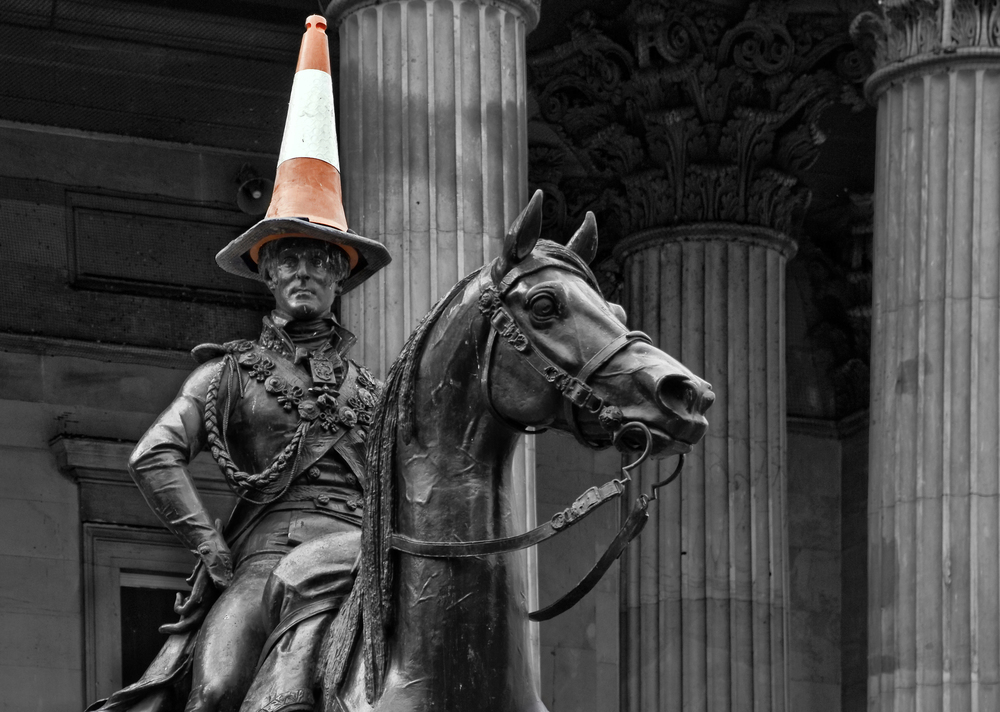
Campaigner Raymond Hackland, who founded the Keep The Cone movement, said at the time: “It’s a harmless way of ‘sticking it to The Man’ and it simply gives people a laugh or reminds them of good times.”
The statue was named in Lonely Planet’s guide to the top ten most bizarre monuments on Earth in 2011.
Their listing says: “Usually the horseback statue of the Duke of Wellington outside is cheekily crowned with a traffic cone; the authorities grumble, but it keeps happening and is now an icon.”
The cone-adorned statue featured in the Glasgow 2014 Commonwealth Games opening ceremony, as well as film Trainspotting 2.
The Duke
The statue honours Arthur Wellesley, the 1st Duke of Wellington.
Sculpted by Italian artist Carlo Marochetti, it was erected in 1844.
Known as the Iron Duke, Wellesley is regarded as one of Britain’s greatest military commanders, but also one of its worst prime ministers.
His triumph over Napoleon at the Battle of Waterloo in 1815 is his greatest accomplishment – as well as wearing and popularising the style of boots that would become known as Wellingtons, of course.

Enjoy the convenience of having The Sunday Post delivered as a digital ePaper straight to your smartphone, tablet or computer.
Subscribe for only £5.49 a month and enjoy all the benefits of the printed paper as a digital replica.
Subscribe